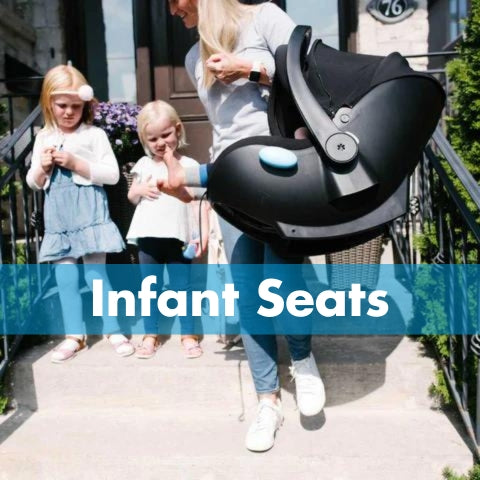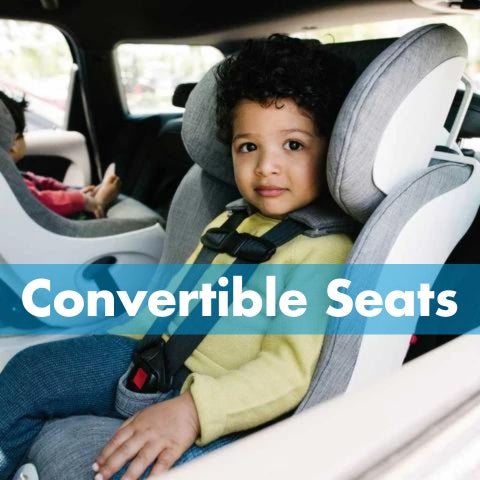The arrival of a child is an exciting time in life. It is a time of firsts, a time of research, and a time of shopping. There are many big purchases that are made in the first year of a baby’s life, but none are as important as the convertible car seat – the seat that cradles a child as an infant and continues to keep him safe as a toddler and a preschooler.
A convertible car seat is a seat that can be installed and used rear-facing for an infant or young child, and then turned forward-facing once a child is larger and older. On average, a child will be able to use a convertible car seat until he is ready to transition to a booster.
Before visiting your local retailer, it’s important to prepare for the trip by finding out your child’s current height and weight. Plan the trip for a time of day when your child is typically content, and plan to drive the vehicle that the car seat will be installed in.
Here are the key points to consider when choosing a convertible seat for your precious cargo:
- Your child should fit the convertible car seat well
Children come in different shapes and sizes and it’s important to choose a seat that fits your child well. Check that your child is within the height and weight limits of the car seat, then place him in the car seat, and check to see how much growing room he has. The larger the space between the top of his shoulders and the highest set of harness slots, the more growing room there is and the more use you will get from that convertible car seat.
Some models of convertible car seats may have adjustable headrests that cover some of the harness slots. Store staff is often available to assist in adjusting the car seat to fit your child so that you can buckle him in and assess his fit and comfort.
- The convertible car seat should be easy for you to use
Convertible car seat models vary with some seats having ease-of-use features that make it easier to install in the vehicle, while others having features which make it easier to use the seat on a daily basis when loading and unloading your child. Some seats have ease-of-use features for the installation of the car seat, and are also easy to use when loading and unloading your child.
To check the daily ease-of-use factor, pay attention to the amount of effort needed to properly position and tighten your child in the car seat. A harness that is easier to tighten can have a lot of benefits long term as your child grows. Other features such as the chest clip or crotch buckle design may also influence ease of use. These features are also able to be checked when your child is buckled in to the car seat while checking how he fits in the car seat.
- The car seat should fit your vehicle well
To give your child the best protection possible it’s important that his new car seat fits well in your vehicle. Vehicle interiors differ from model to model and the interior of any individual vehicle will influence how a car seat fits in the vehicle.
The first two steps that have already been discussed will generally narrow down your choices to one or two models of seats that should be tested in your vehicle prior to making a final decision. Many stores allow customers to test the fit of a car seat in their vehicle prior to purchasing a seat. Some stores may have staff trained to assist with a test installation, or there will be installation diagrams on the stickers on the side of the car seat if the instruction manual is unavailable.
When checking the fit of a car seat in a vehicle, it’s important to install the car seat the way it will be used. Once a car seat is installed it is quite common for the position of the seat to shift and for it to have an influence on the fit of the seat.
Once installed, the car seat should have less than 1 in. of movement side-to-side and front-to-back when checked at the belt path, which is the location in the car seat where the belt passes through the shell of the car seat.
- Consider additional Safety Features
Some convertible car seats offer additional safety features such as side impact protection and energy absorbing technology. Some may also have additional testing done that exceed the minimum requirements, such as testing of a seat at a higher speed to simulate a more severe crash (NCAP testing).
Additional features may also come in the form of features that improve ease-of-use of the car seat. A car seat that is able to be installed easily makes it easier to install and use the seat properly.
The task of choosing a safe ride for your precious cargo may seem a bit daunting at first, but by reviewing the safety features that are most important to you and combining them with how your child fits the seat, how the seat fits your vehicle, and how easy the seat will be for you to use on a day-to-day basis, you’ll be ready to roll with the confidence that your child is riding in the convertible car seat that is best for him and your family.




